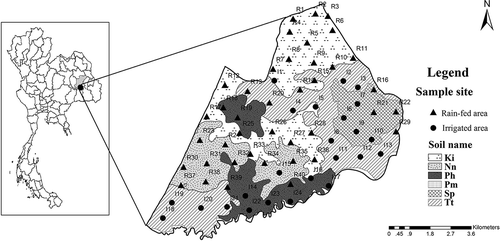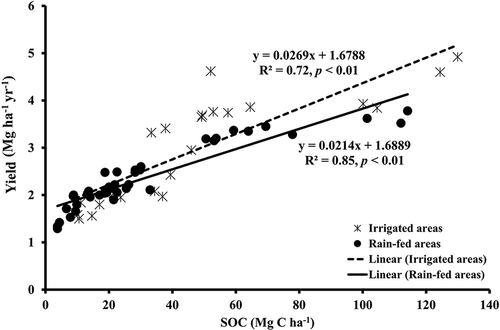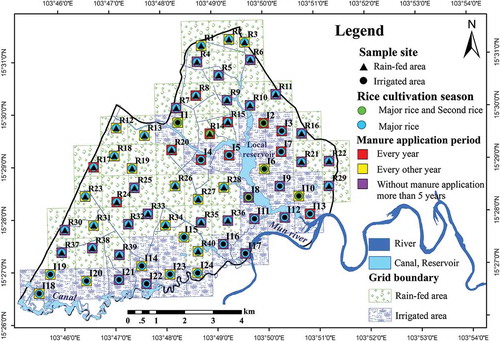Figures & data
Figure 1. Study area and soil series (LDD Citation2003).

Table 1. Main management practices, rice yield, and SOC in irrigated areas (n = 24).
Table 2. Main management practices, rice yield, and SOC in rain-fed areas (n = 40).
Table 3. Comparison of the annual main management practices between irrigated and rain-fed areas (mean ± SD).
Table 4. Comparison of soil physical and chemical properties between irrigated and rain-fed areas for all soil depths (0–40 cm) (mean ± SD).
Table 5. Average values of soil physical and chemical properties at four different depths, 0–10, 10–20, 20–30, and 30–40 cm from all sites (mean ± SD).
Table 6. Correlation matrix of soil physical and chemical properties with SOC at all sites (n = 64).
Table 7. Comparison of rice yield and SOC between irrigated and rain-fed areas (mean ± SD).
Figure 3. Relationship between rice yield and SOC at all sites. The dashed line and solid line were fitted by simple linear regression for irrigated and rain-fed areas, respectively.

Figure 4. Relationship between rice yield and N, P, and K application rates: (A) irrigated areas; (B) rain-fed areas.

Figure 5. Relationship between rice yield and the period of manure application: every year, every other year, and without manure application for more than 5 years: (A) irrigated areas; (B) rain-fed areas.

Figure 6. Comparison of rice yield and SOC between irrigated and rain-fed areas under the period of manure application (men ± SD): (A) irrigated areas; (B) rain-fed areas.

Table 8. Multiple regression equations used to predict SOC and rice yield using manure (M), N fertilizer (N), P fertilizer (P), and K fertilizer (K).

